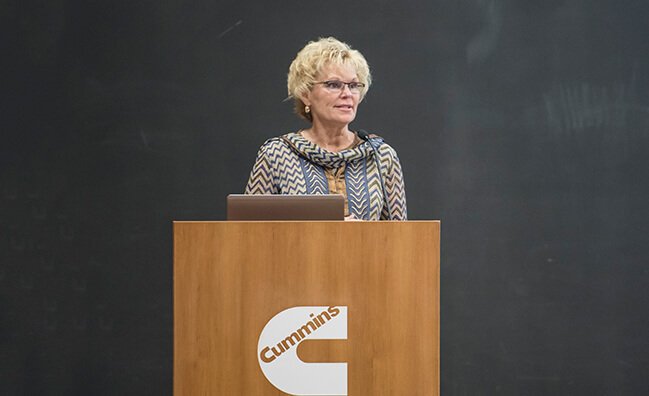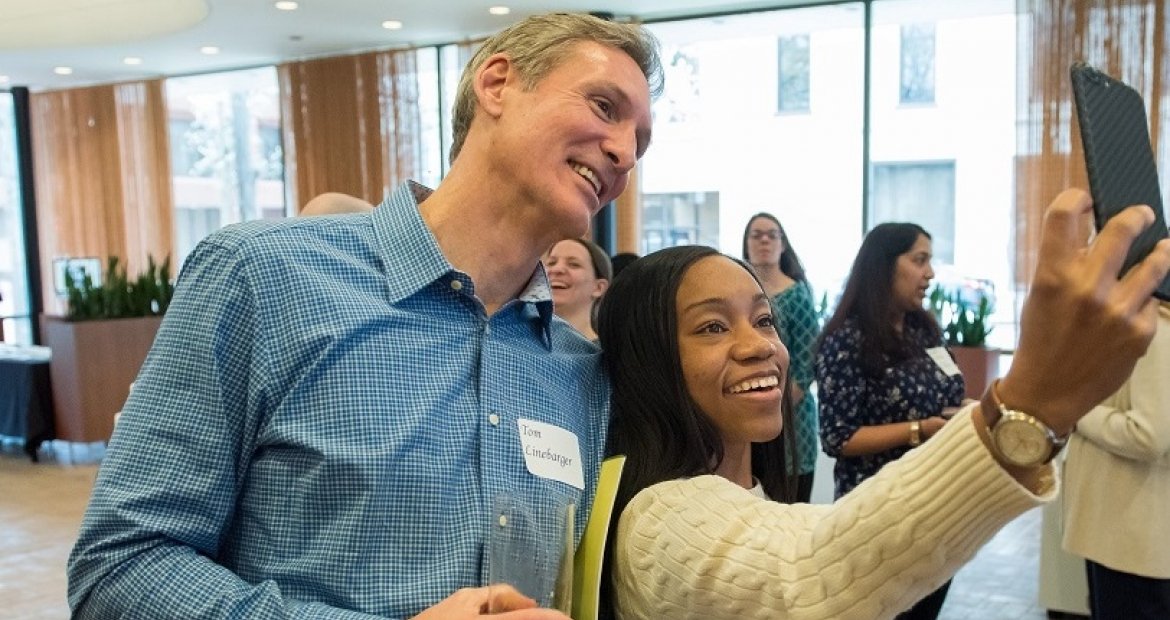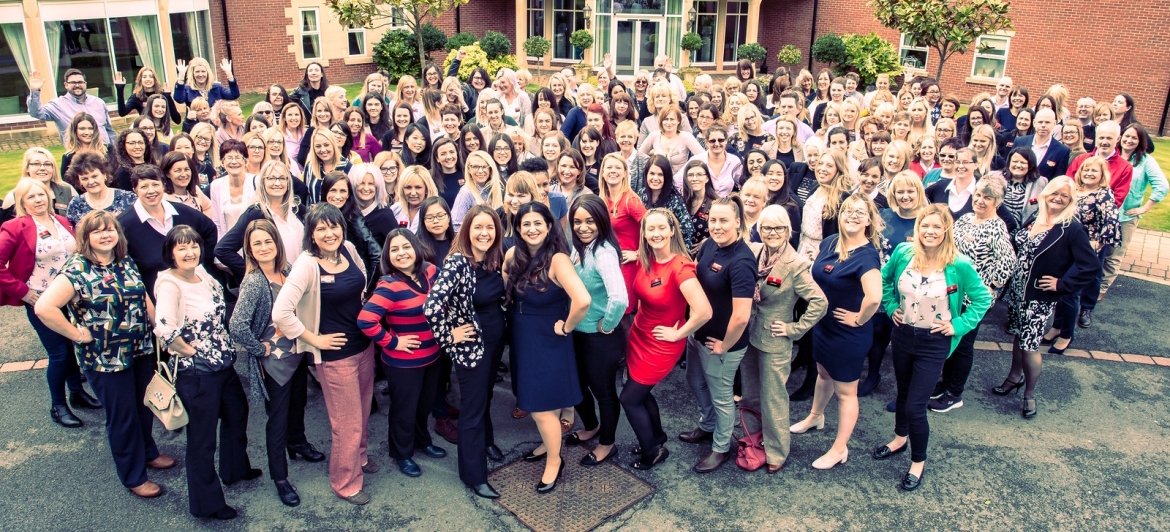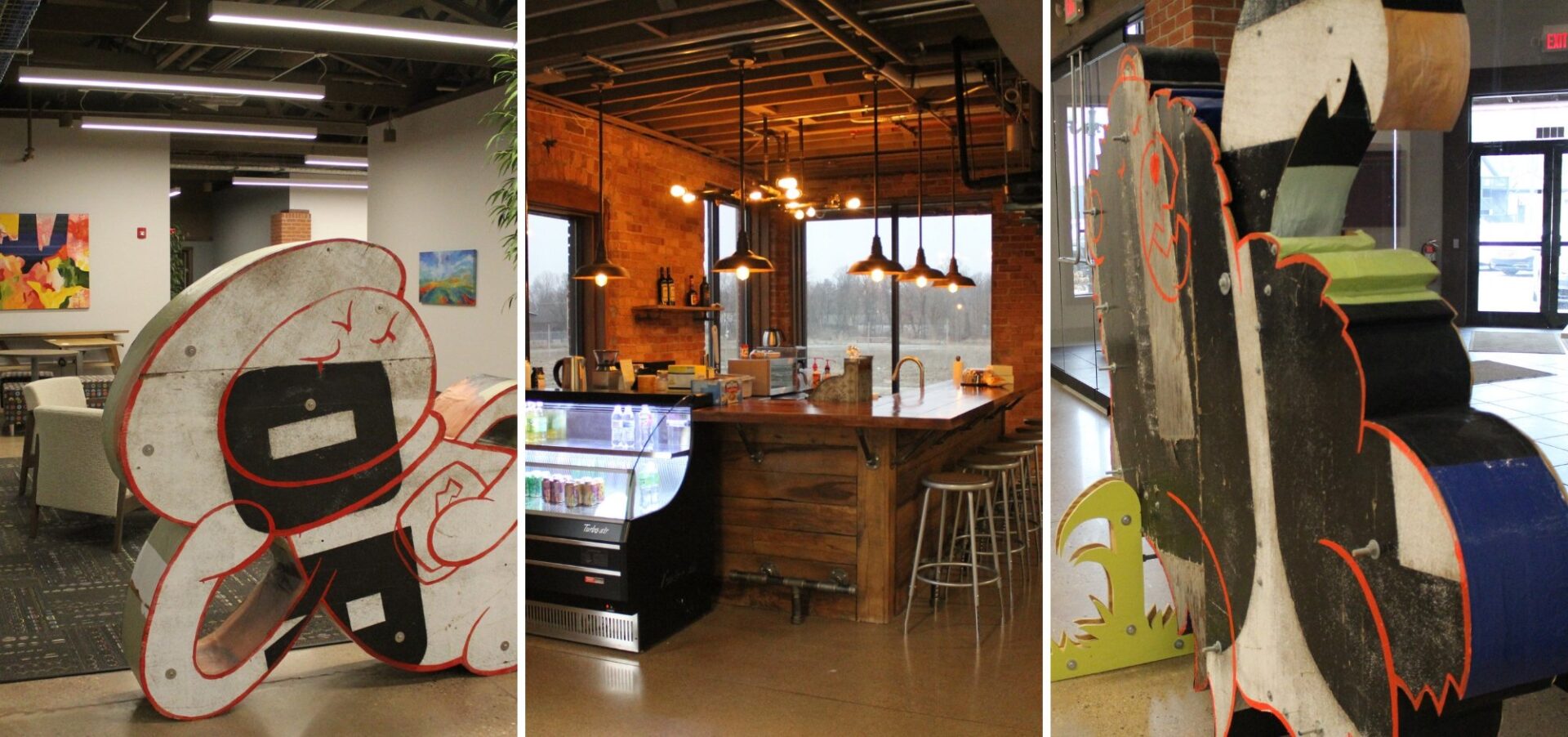Cummins CIO: Diversity and inclusion require focus and a plan
If Indiana tech companies are going to avoid the highly publicized negative trends of homogenized Silicon Valley firms, they are actually going to have to talk about diversity and inclusion. It’s not enough just to want it or to be on the right side of it. Regular workplace discussions about diversity and inclusion are a necessary part of the solution.
“People are worried about saying or doing the wrong thing so they tend to not to say anything instead of having open conversations about differences,” said Sherry Aaholm, CIO of Cummins. “It requires you to know others at a more personal level, then it opens the door to have a more vulnerable conversation on the subject. Being quiet won’t change reality.”
Sherry leads a global IT team of 1,700 employees at Cummins, which is one of several large tech-enabled enterprises in Indiana that could teach the rest of the tech community a thing or two about diversity and inclusion. The Columbus, Ind.-based engineering and technology company has been ranked on DiversityInc’s Top 50 Companies for Diversity list for 12 consecutive years, including the specialty list Top Companies for Executive Women this year. Cummins also earned a perfect score over 10 consecutive years in the Corporate Equality Index by the Human Rights Campaign. Cummins isn’t a newcomer to the diversity cause; it’s been a core value for more than 40 years.

Cummins achieves its diversity and inclusion goals through focus and a plan, which is customized to each function or business unit. The company has its own global and regional conferences on diversity and inclusion, they set goals and develop tools to evaluate progress, and everyone is engaged from project teams to executive leadership. In IT, Sherry and her leadership team review their progress monthly. The data provides insight into how they are doing reaching their goals, and then they define specific plans to address results as a team.
“For example, you can set a goal, but if you don’t know how to support and provide tools to help your team have open discussions, it may only be a game of numbers to hit the goal,” said Sherry. “You have to help people understand unconscious biases and how to talk about the subject.”
Sherry noted that we all have unconscious biases based on how we were raised, where we lived, what our families were like, and even who we played or engaged with as children. To really enable diversity and inclusion, we must recognize our unconscious biases to make them conscious and understand their impact.
“The technology sector is behind when it comes to diversity, and I think the recent public outcry is putting a spotlight on it,” she said.
That spotlight can be both good and bad. Good because it tends to drive more visible changes and requirements on public companies, including the recent California movement to have at least one female on a public board. It can also be a bad thing, explained Sherry, speaking as a diverse individual herself, because she and all women and minorities want to be selected for roles due to their skills and not just to meet company requirements.
One of the key reasons Sherry joined Cummins as CIO five years ago was because of a shared view on diversity and inclusion. From the very first interview, including talking to CEO and Chairman Tom Linebarger, everyone expressed their interest in what she brought to the table — meaning her whole self.
“It wasn’t only my technical or business skills, but my values and goals,” she said. “The entire leadership team at Cummins is passionate about this, which is clear from the leadership team’s representation itself.”

In the five years she has been at Cummins, the company’s IT workforce has increased by 20 percent and the skill mix requirements have changed dramatically to match what Sherry herself has seen in any large-scale service industry. CEO Tom Linebarger has, for years, spoken about Cummins as a technology company, and presents his case in a Youtube video from 2015.
As a $20.4 billion global employer of 58,600 people, Cummins’ IT operation and emerging digital technologies group – the Digital Accelerator – support and collaborate with cohorts in at least 200 different countries and 70 different manufacturing operations. Main IT locations are in Indiana, Brazil, Mexico, China, and India, along with smaller locations in Europe and Africa.
Most people think of Cummins as an engineering company, which is true; however, it could not provide its array of competitive and innovative products without the power of IT.
“We deliver products and services globally and across the US, and it is impossible to think that we could understand all the challenges, dynamics, cultures, and business practices that happen globally sitting in Indiana. The focus on and plan for diversity and inclusion make all the difference.”
Sherry provided three key lessons on diversity and inclusion that she has learned over her 26 years of leading IT teams at large enterprises:
I’m not a quota.
Everyone wants to be valued for what they bring to the team and made to feel welcome, that their view and skills are important. No one wants to feel they got a job because an organization needed to meet a diversity goal. Therefore, I remind myself to assess my own biases and seek to understand individuals to find the value and encourage them to reach and take risks.
Slow down to listen and observe.
It seems like everything is a demand on our limited time, and slowing down feels like it is wasteful. I had a mentor who said that some of the most valuable insights I would learn would happen if I spent time socializing before and after a meeting. His point was to take a few minutes to learn about the personal side of an individual. We all feel valued and included when people ask about our day, our kids, our families.
Reach back and pull others forward.
I feel it is a personal mission to pull others forward. Those mentors who did this for me pushed me to do things I thought I couldn’t – to take risks. Mentoring and advocating for diverse individuals, and reaching back to help pull them forward, broadens the impact of diverse talent.




